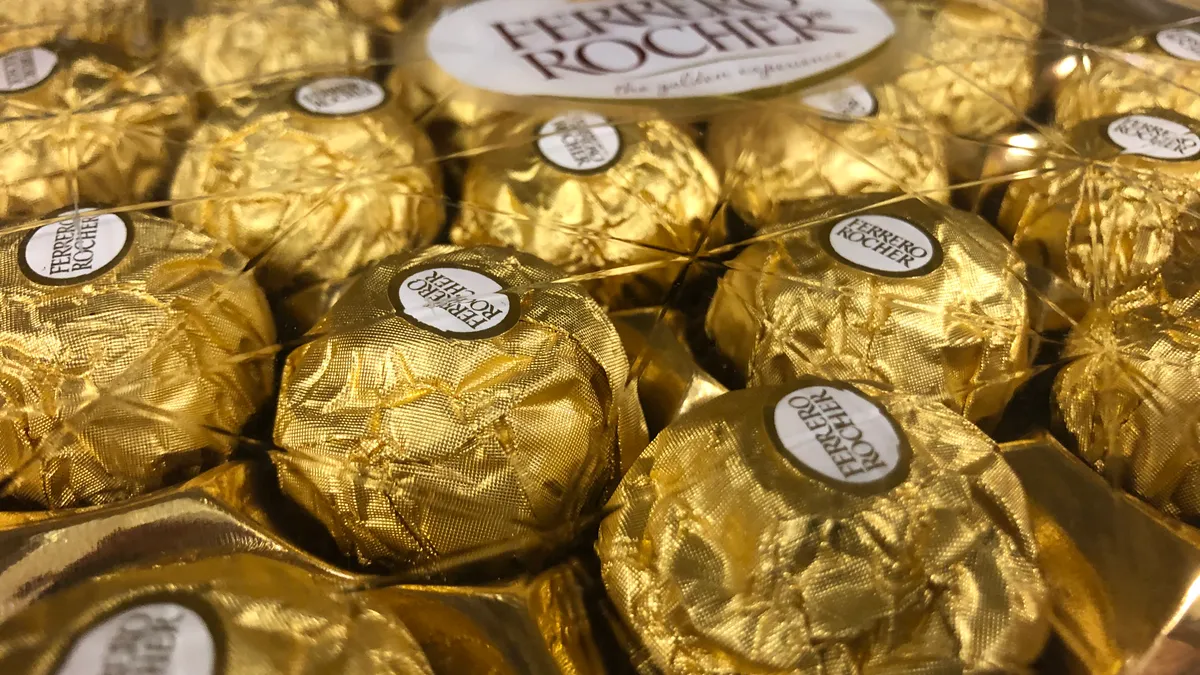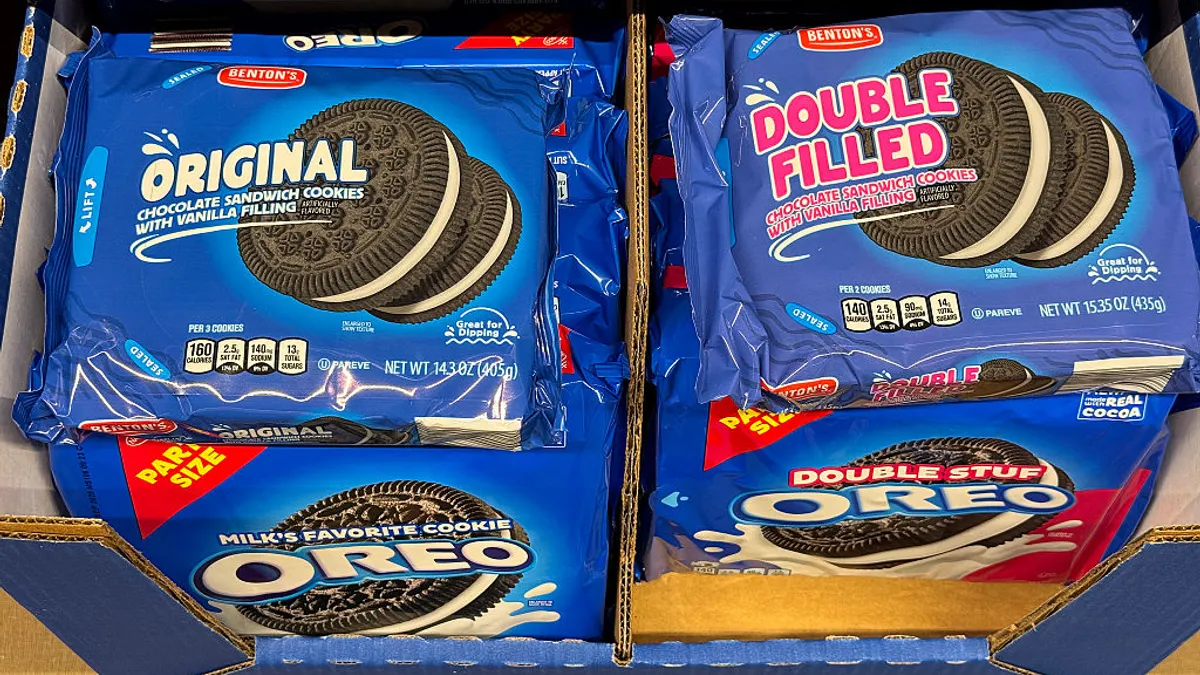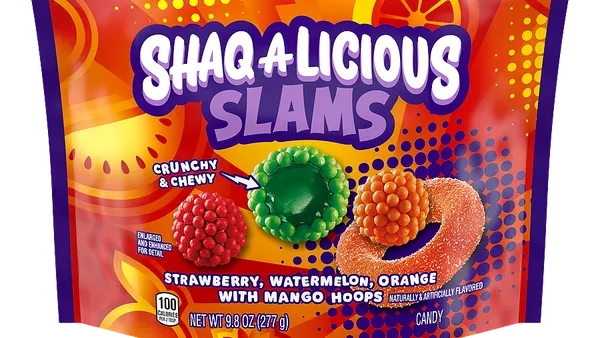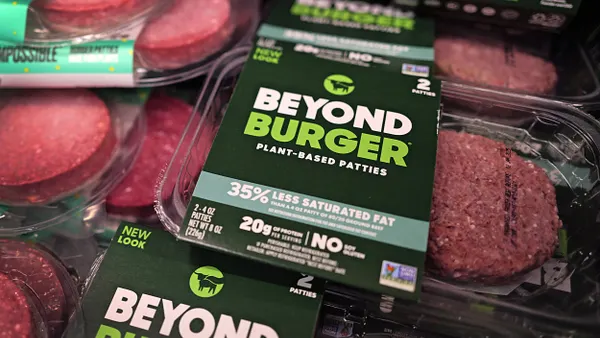Dive Brief:
- Hershey said it would remove artificial dyes from its snacks by the end of 2027, joining a growing list of food manufacturers that have made similar pledges in recent weeks.
- The Jolly Rancher and Dot’s pretzel maker said in a statement that the move "is a natural next step in our program to ensure consumers have options to fit their lifestyle while maintaining trust and confidence in our products."
- Hershey’s announcement comes after J.M. Smucker, Conagra Brands, General Mills, and Kraft Heinz have said they would remove synthetic colors by the end of 2027. Nestlé USA plans to fully remove artificial colors from its food and beverage portfolio by mid-2026.
Dive Insight:
As federal and state officials crack down on artificial dyes in the food supply, a growing number of companies like Hershey are responding by removing the ingredients from their products.
Health and Human Services Secretary Robert F. Kennedy Jr. has asked the industry to voluntarily remove six synthetic dyes before 2027. Pressure is mounting on the state level, too. West Virginia is banning food companies from selling products with seven commonly used additives and colors, and Texas is requiring warning labels on products that have synthetic dyes beginning in 2027.
Hershey said in its statement that an emerging patchwork of state laws is creating confusion among consumers that ultimately threatens to increase costs. The Pennsylvania company added that a "strong national food ingredient approval system is the best way to ensure food safety, affordability and quality in the marketplace.”
Companies are increasingly finding it easier to back a uniform federal mandate rather than comply with different states where the requirements can widely vary. And as competitors announce steps to remove the controversial colors, that's ramped up the pressure across the industry to act.
Hershey, which posted $11.2 billion in net sales last year, owns brands reliant on artificial colors such as Twizzlers, Jolly Rancher and Shaq-A-Licious XL Gummies. The vast majority of its portfolio, however, does not use synthetic dyes.












